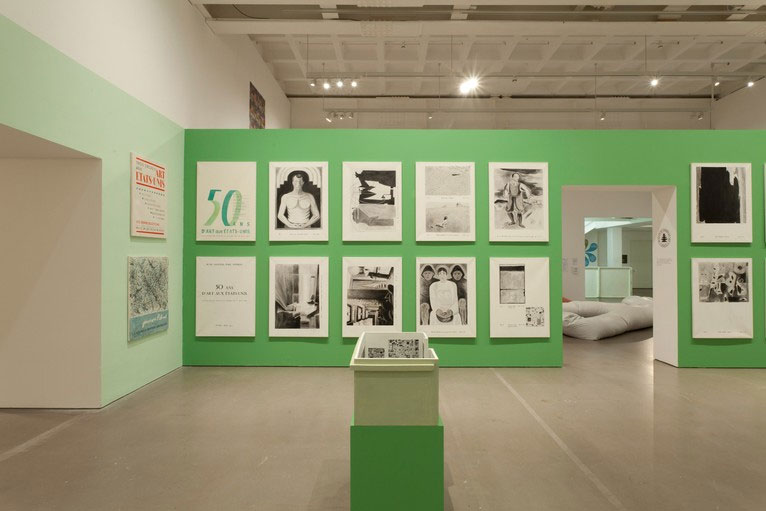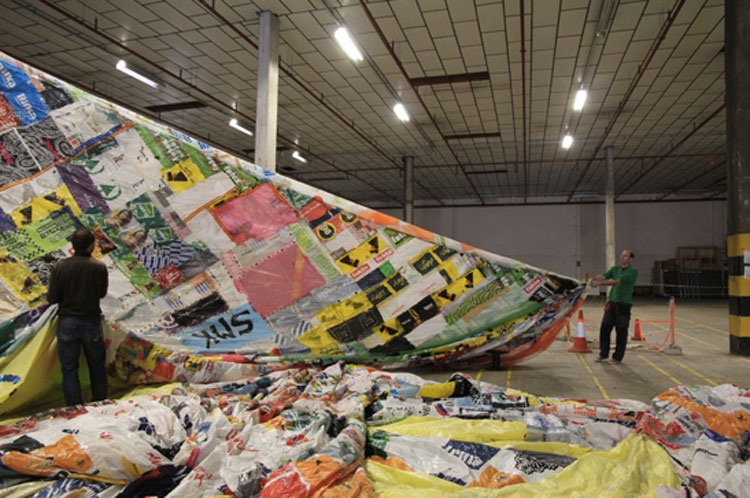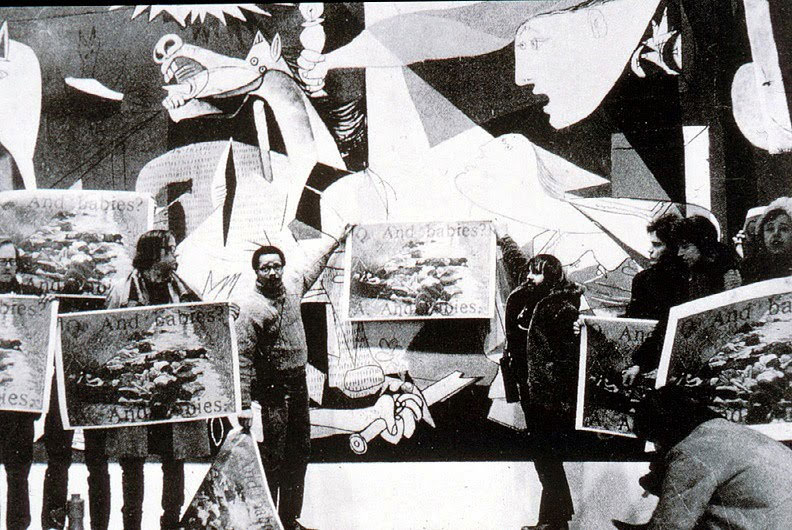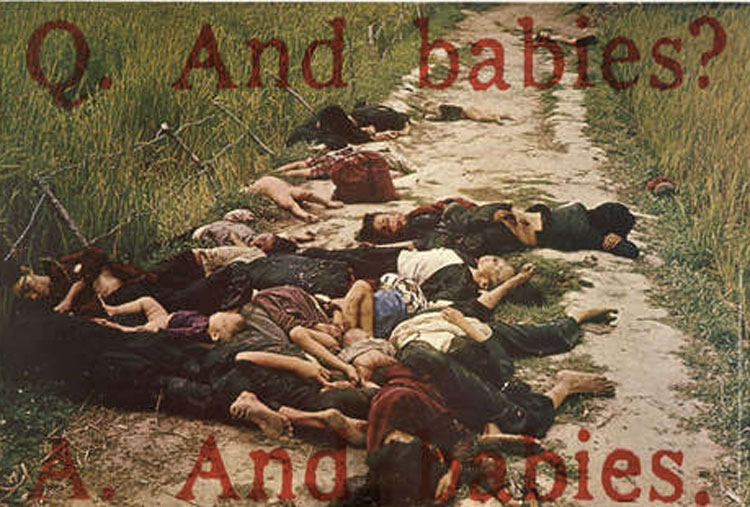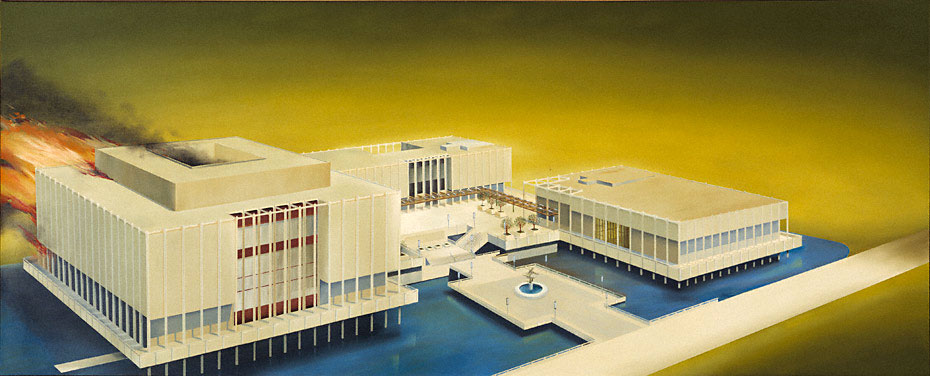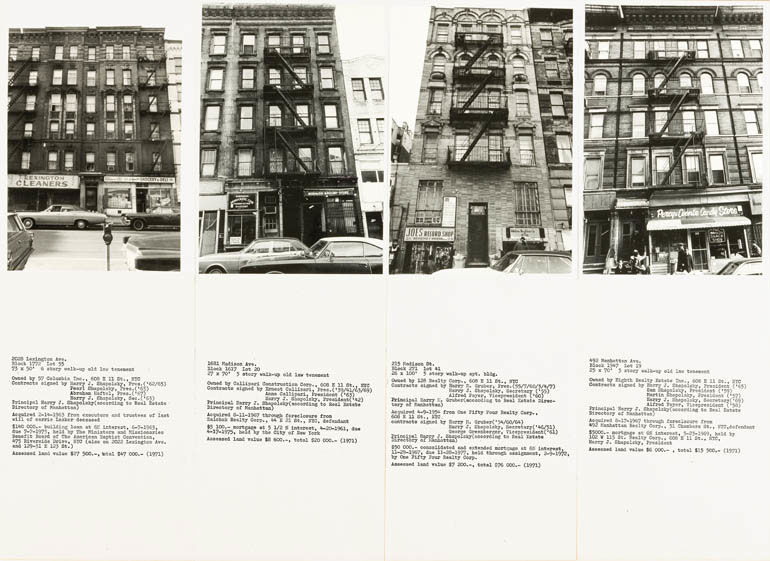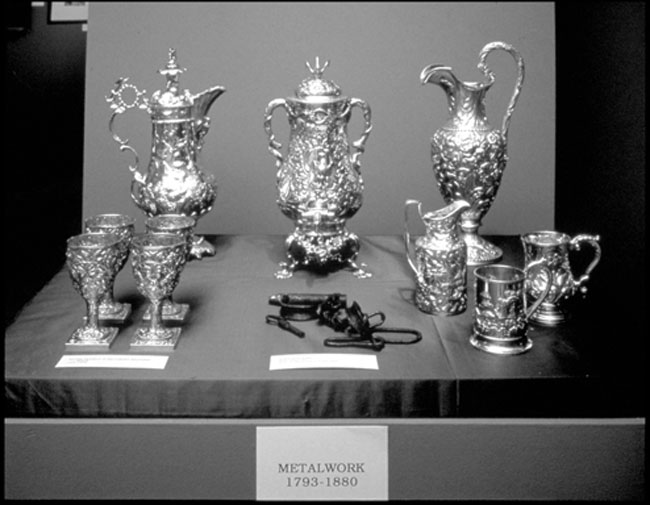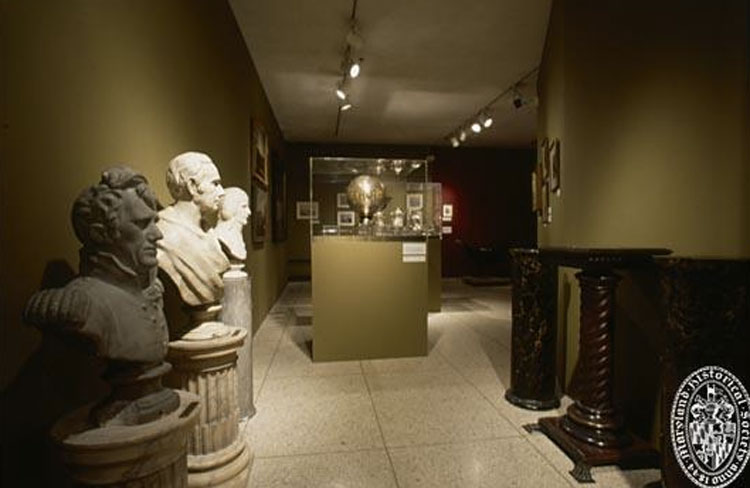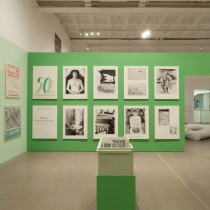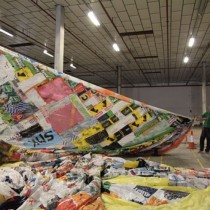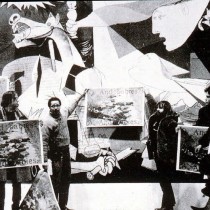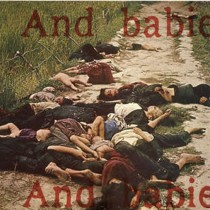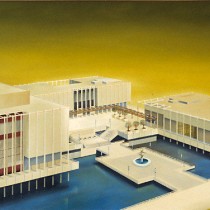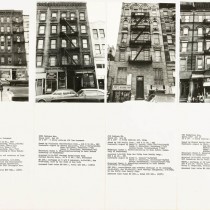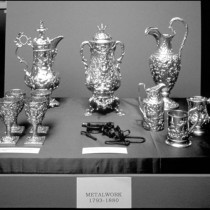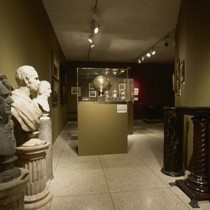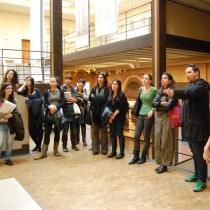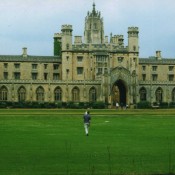Prologue
The second part of the special issue Museums and Museology in modern society. New challenges, new relationships, starting today and including four articles, attempts to present, by necessity, in an indicative manner, theoretical approaches to 20th and 21st century museums as well as practices already being implemented or being designed for the near future. In the first article, Anna-Maria Kanta studies the concept of museums and collections as ideological fields of reference in the work of important artists representatives of the so called Institutional Critique and presents clearly and concisely very interesting characteristic examples of artists and their works, commenting at the same time on the past and future of museums. In the second article, Alexandra Bounia presents the European research programme EUNAMOS (European National Museums: Identity Politics, the Uses of the Past and the European Citizen) whose main aim is to study and comprehend National Museums as cultural and political constructions in the contemporary multicultural status of Europe which raises multiple challenges and causes for a redefining of their identity and their role in society. The article describes the research programme’s goals and methodology and briefly presents some issues resulting from its research activities and relating to both the present and future of European national museums. The third article’s starting point is the discussions that took place in Oxford in July 2013 as part of the conference on “The Future of Ethnographic Museums”. Esther Solomon, the article’s author, attempts to show to their advantage the extremely interesting and politically pertinent opportunities offered by ethnographic museums for developing an intercultural dialogue and cultivating critical thought on history. Her article investigates the role of Ethnographic museums in the 21st century raising a series of important questions such as the following: how these museums, as products of colonialism, can respond to the political and demographic challenges of our times? How do they construct and deal with national and cultural difference in an era of globalization, the constant shifting of populations, the shrinking of differences but also of the intense development of nationalism? Last, this part’s fourth article completes the arguments of the previous ones by focusing on our own national and ethnographic museum that is in the process of complete transformation. Elena Melidi and Alexandra Nikiforidou offer a foretaste of the future appearance of the Museum of Greek Folk Art by presenting the museological study for its permanent exhibition in Monastiraki as submitted and approved by the Council of Museums in December 2012. In their article they describe the dominant idea determining the exhibition’s concept, the ideas on which this concept was based, as well as the aims and meanings of the different thematic sections of the exhibition. Moreover they outline the exhibition’s content and subject matter, and describe its structure analytically, as well as the procedures followed to produce this study. Marlen Mouliou Lecturer of Museology, Department of History and Archaeology, National and Kapodistrian University of Athens
The concept of museums and collections as a field of reference in Institutional Critique
In 2011 the Arnolfini Centre for Contemporary Arts in the UK presented the “encyclopedic” exhibition “The Museum Show”. The exhibition included twenty nine of the most historic artists’ “museums” such as the Boîte-en-Valise (1935-1940) by Marcel Duchamp and the Musée d’Art Moderne, Département des Aigles by Marcel Broodthaers (1968-1972). It also included the most contemporary works such as Khalil Rabah’s Palestinian Museum of Natural History and Humankind (2003 to the present) and the Museum of Contemporary African Art (1997-2002) by Meschac Gaba. The exhibition, realized for the centre’s 50 years of operating, was promoted by the curators as a “museum of museums” and as an attempt at an all round presentation and understanding of this “extremely old trend” –as they termed it– in the history of modern and contemporary art (note 1) (fig. 1-2). During that same period, the regional museums in South West England were completing the second phase of the “New Expressions” programme. Under the auspices of the Arts Council, the programme allowed extremely diverse types of museums, such as art galleries, science museums and museums of local history, to entrust a fresh interpretation of their collections to contemporary British artists. This programme, now going through its third phase, has spread both around the country and to the North of England with the explicit aim of achieving an “approach at a national level between artists and museums” (note 2). During a long and, as characteristically stated by sociologist of art Vera Zolberg, “gloomy symbiosis” between artists and museums (Zolberg 1992, p. 106), the cases described above constitute the most recent events of an interesting phenomenon. Contemporary artists use museological methods in their work or even adopt the external, typical characteristics of the institution and more and more museums resort to artists for their assistance in functions such as the interpretation of collections and educational programmes. On the one hand the “Museum Show” comes as an addition to a series of exhibitions that refer back to themselves and use the museum itself as an object to be dealt with by artists who study the various complexes of ideas, institutional relationships and roles that this, the museum, incorporates (note 3). On the other hand, initiatives, such as those of the Arts Council, show an intention, in Britain at least, of the relations between artists and museums to acquire an institutional status and to recognize artists’ “non-artistic” roles such as, for example, that of curator-museologist or museum educator. A development that in turn is placed in the framework of interdisciplinary recent discussions (note 4) on the rules concerning the cooperation of museologists and artists, the possibilities of creating procedures for the taking of collective decisions, the opportunities for the making of professionals the museum offers (and not only the art museum) but also the greater risks of such ephemeral or long-term associations. The above conversations that anticipate the opening of a space for a productive dialogue between museums and artists, evolve in the historic aftermath of artistic practices that with the title of Institutional Critique pointed out the limits and the statutory obstacles of such a “dialogue”, especially when it aims at the museum’s institutional reform. The institutional deviations of the Art Museum and the emergence of Institutional Critique Institutional Critique took its place in the canon of Art History at the end of the 80s with artists Marcel Broodthaers, Michael Asher, Daniel Buren and Hans Haacke being their most important representatives. In the ’60s and ’70s, the above resorted to “attacks” both amazingly specific and symbolic against Institutions and Establishments of Art. Both the concept and the ideological burden carried by the Museum, as a product of the Enlightenment, and specific museums (mainly in North America) with the MoMa being the “par excellence Institutional Symbol of Modernism” (Crimp 1984, p. 68), constituted a systematic focal point of artistic analysis and ideological confrontation. To a great degree, the work of those artists developed along with projects of the French May uprising (note 5) and with demands of a political and labour related nature that were quickly transferred to the museum (fig. 3-4). The attack focused on the art museum was accompanied, at the same time, by an intensive study of the ways in which artistic production, economic networks for its distribution, and institutions for its reception are interlocked and all contribute to assessing a work of art. Theoretical and artistic developments of the era were leading to the radical redefining of the work of art and of the artist subject, as well as to structural changes in the international art market that allowed collectors and entrepreneurs to be present at museum board meetings (note 6). The above reinforced the position that far from being an ideologically neutral space, the museum is penetrated by economic and political interests and it reflects relations of power and a class related enforcement of aesthetics. At a level of artistic production, according to Craig Owens, these events marked the shifting of interest from the work itself to the framework, namely “the network of institutional practices that define, set limits and incorporate both artistic production and its acceptance” (Owens 1992, p. 126). Being an institution par excellence of “Cultural Confinement” as the artist Robert Smithson characteristically stated (Smithson 2009, p. 140), the museum has inevitably been the object of systematic criticism. The difference was that artists involved in practices of Institutional Critique did not aim at a permanent break with the museum followed by its obliteration (fig. 5). On the contrary, it could be said that they kept an attitude of critical commitment, going for site specific interventions in museums and contributing to a theoretical analysis of the institution (note 7). According to Alexander Alberro, these artists kept faith in their drastic promise of creating a public space, an incarnation of the imaginary museum of the European Enlightenment, making obvious through their work how much of an aberration the art foundation had become instead of fulfilling its democratic, public role (Alberro 2009, p. 3). The artist Hans Haacke charts the ideological space of the museum A typical case is that of Hans Haacke who studied the invisible grid of social, political and economic interests that govern museum administration, as well as the process of giving meaning to a work in the museum. As noted by Martha Burskirk, in the early ’70s Haacke succeeded “to locate the clear limits and restrictions in the reception of works to the museum” (Burskirk 2003, p. 165), “challenging” Guggenheim’s Board of Directors to cancel his first retrospective exhibition because of presenting three interrelated works –“Social Systems”– entitled Sapolski, Manhattan Property Sales Company (fig. 6). Through photographs, archive material and detailed maps, the first two works documented the ownership status of poor neighbourhoods in New York. The third work would be an enlarged version of the “referendum” Haacke had carried out a year earlier in the Museum of Modern Art, New York (“Is the fact that governor Rockerfeller did not condemn President Nixon’s policy in Indochina a reason to vote against him in the November elections?”). Haacke would ask the museum visitors to answer 10 demographic questions and 10 questions related to sociopolitical issues and the answers would be hung up in the museum on a daily basis (Haacke 2009, p. 125). If, by comparing the poor apartment blocks and the grandiose circular rotunda of the Guggenheim, the first works demonstrated class inequalities and the divisions that an art museum recreates, the third work partly “restored” the ties between the museum and society creating a potential space for public exchange (between a specialist public nevertheless) inside a strong museum framework. New representatives and trends: Institutional Critique “encounters” the theory of museology During the ’80s a new generation of artists offered new ways of conceptualizing the “framework”. Men and women artists of this generation who had familiarized themselves with the first critical evaluations of the Institutional Critique, re-assessed and expanded this trend’s projects. Following the tradition of the “historic” Institutional Critique, these artists did not oppose the museum so much in the economic and political interests that determined it, but the extreme racial, class structured and patriarchal ideology that permeated it. This resulted in adding to the “catalogue” of their critical interests, the Natural History museums, the Ethnographic and Anthropological museums and the History museums. The greatest notable difference, however, in this generation (which includes among others, the artists Andrea Frazer, Mark Dion, Louise Lawler, Fred Wilson, Rene Green) can be located in their attitude towards and inside the broader institutional framework of art and the museum. As noted by Rosalyn Deutsche, these artists primarily investigated the ways in which they themselves produce an authentic way of talking without simply doubting the authoritarian voice of museums (Deutsche 2009, p. 66). Their work was accompanied both by this change towards introspection and by the study of the by-products of institutional involvement with the museum using artistic or other means. Their work coincides chronologically with a similar introspective and critical change of course in museums, that would lead to the emergence of the New Museology with the 1989 historical publication by the same name. To a great degree it began with the realization that both the museum’s architecture and the framework of the exhibition add new meanings to the objects and ideologically reinforce already sated narratives. This change of course was dictated be specific as well as sociopolitical developments, pressures outside institutions and political dilemmas that forced the museum “to examine the relationship between what it does and the historical, social and political framework in which it functions” (Corrin 2004, p. 382). The following critical issues were only some among many the museum was asked to account for and to translate into good daily practices, especially since the ’90s and often with the artists acting as “aids”: Reduced financial sources, the emergence of new social movements, an increase of marginalized voices, a popular demand for the repatriation of objects to their communities and a revival of an interest in the policies of cultural and national diversity. Artistic curating as Institutional Critique: the case of Fred Wilson Fred Wilson’s artistic practices come within the framework of broader discussions and at a time when the attention of critical museology is directed towards ethnographical and historical museums. His work has typical elements of the “methodology” developed by the second generation of Institutional Critique: the insistence on issues of reconstructing and symbolically representing communities in the museum, as well as insisting on what Hal Foster terms “the institutionally insignificant” (Foster 1986, p. 85) in museological practices that are readily available to the public (as, for example, the spatial arrangement of objects and the explanatory texts”. In his characteristic work Mining the Museum, Wilson extensively “re-exhibits” the collection of the museum of Maryland Historical Society. The result was a series of “absurd” and extremely annoying contrasts: white stands with busts of famous men had been placed next to black stands without busts, 19th century metal work objects next to handcuffs and a scale model of a ship for the transport of slaves, an amphora (an archaeological find) next to a wicker basket (an ethnographic find) a Ku Klux Klan mask inside a baby’s pram. Descriptive captions accompanied the objects (fig. 7-8). According to Christian Kravagna the work created an important artistic precedent, contrasting institutionally acceptable motifs of representation with the political realities that the motifs reject (Kravagna 2008). Fred Wilson’s curatorial intervention drew attention to the ways specific classification systems and reconstruction technologies contribute to the reproduction of racial inequalities within the museum and artificially conceal its historical involvement with colonialism. We could, however, add that the extremely “glaring” contrast between the “neutral” content of the texts and the complex of objects on display, once more confirmed that the museum is able to do “things with words”, that knowledge and power go hand in hand. Or, as Baxandall would say, that the spectator, curator and exhibit (and also consequently the “exhibited other”) meet in the space between the museum caption and the object (Baxandall 1991, p. 36). Wilson would prove that this space remained unexplored for the most part and difficult to be covered by the visitor. Acceptance and establishment of Institutional Critique as a practice of museology In 1994, just two years after the exhibition Mining the Museum took place, the artist Andrea Fraser and the curator Helmut Draxler organized the exhibition Services: The Conditions and Relations of Service Provision in Contemporary Project-Oriented Artistic Practice. The exhibition was recorded as an “archive documenting the collective efforts of cases over the last thirty years during which artists and curators attempted to transform the material conditions of their activities” (Fraser 1997b, p. 118). The exhibition was followed by two days of discussions between artists and curators on the concept of “the project”. A focal point of the discussions was the meaning of “the provision of services” by artists in view of museums’ and curators’ increased interest in forms of communal art. Frazer interpreted this change of interest as “the necessity” on the museum’s part to participate with the artists in taking a type of common initiative in public education and institutional reflection (Fraser 1997a, p. 116). Both the artist’s and the curator’s place in an institution became the focal point of the discussions that followed (note 8). The participants realized that the assigning of projects to artists at the very least required re-examining the relationship between the museum and the artists if not raising direct issues of artistic autonomy. All were convinced that, museums, on their part, intended to repeat critical projects that had often appealed to the public but the participants reacted to these intentions quite critically even suspiciously (Blazwick et al 1997, p. 131). Despite the particularly warm reception of the installation Mining the Museum, Fred Wilson was of the same opinion. Without denying the artistic autonomy guaranteed to him by the museum, he admitted that he had acted like a “museum therapist”, raising racial issues and matters of racism that the museum itself avoided discussing openly (Barry et al 1997, p. 122). The reported failure of Institutional Critique and the future of the museum Since artistic curating in museums has both multiplied and been given an especially “warm” welcome as an institution, this already twenty year old discussion seems today to be exceedingly topical. At the same time it provided for a series of parallel theoretical discussions and curatorial practices at the start of the 21st century that attempted to critically evaluate the dynamics of this trend in the future (note 9). For the most part, the discussions were monopolized by the failure of the “second generation” of artists of Institutional Critique to create radical changes within the museum institution. According to Brian Holmes, most of this generation’s work “was also carried out in the form of meta-reflections” (Holmes 2013, p. 17). They admittedly constitute comments on the museum institution in general, “they submit” each time, however, for the most part, to the particular institutional framework in which they are placed (this is a point in which the first generation of Institutional Critique is superior). At the same time, however, the “insistent” presence of Institutional Critique in discussions that investigate the critical and social role today of the artist and of cultural institutions, the concept of “belonging”, the possibilities of a diverse public participating in the creation and enjoyment of cultural goods, is a testimony to the urgency of the critical questions raised by its representatives. Artists such as Hans Haacke and Fred Wilson participated in writing an alternative history of the museum institution that could be considered “combative”, following the example of Hooper-Greenhill (Hooper-Greenhill 1992). It remains to be seen if radical artistic practices developed within the museum institution, will succeed in the emergence of what Victoria Walsh (Walsh 2013) describes as “post-critical museology”.This will transform the already more open critique, at a level of museology theory and artistic practice, to systematic praxis. Anna-Maria Kanta Museologist and Curator of Fine Art Exhibitions, Doctorate Candidate at U.C.L.
